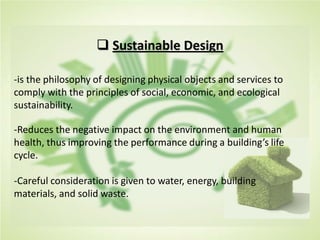The Advancements Of Civil Engineering In Green Infrastructure For Sustainable Development

Are you interested in learning more about the economic benefits of blue-green infrastructure? If so, you've come to the right place. In this article, we'll explore the concept of blue-green infrastructure and highlight how it can bring significant economic advantages to communities.
What is Blue-Green Infrastructure?
Blue-green infrastructure is an approach to urban planning that emphasizes nature-based solutions to enhance environmental sustainability and resilience. This approach incorporates the use of greenery and water management features to mitigate the negative impacts of urban development on the environment and public health.
Examples of blue-green infrastructure include:
- Green roofs and walls
- Green spaces such as parks and gardens
- Rain gardens and bioswales
- Permeable pavements and other water management features
Economic Benefits of Blue-Green Infrastructure
While blue-green infrastructure is primarily focused on enhancing environmental and public health outcomes, there are also significant economic benefits to this approach.
Increased Property Values
Properties located near blue-green infrastructure features such as parks and green spaces have been shown to have higher property values than those without these amenities. In fact, studies have found that proximity to green space can increase property values by up to 20 percent.
Cost Savings
Blue-green infrastructure can help to reduce the costs associated with certain urban infrastructure systems. For example, green roofs and walls can help to reduce the energy costs associated with air conditioning and heating buildings. Similarly, permeable pavements and bioswales can help to reduce the costs associated with stormwater management systems.
Job Creation
The construction and maintenance of blue-green infrastructure features can create jobs in areas such as landscaping and horticulture.
Improved Public Health
Access to green spaces and other blue-green infrastructure features has been shown to have positive impacts on public health outcomes such as reduced rates of obesity, increased physical activity, and improved mental health.
FAQ
Q: How can blue-green infrastructure help to mitigate the negative effects of urban development?
A: Blue-green infrastructure can help to mitigate negative environmental impacts by reducing the urban heat island effect, improving air and water quality, and reducing stormwater runoff.
Q: Are there any upfront costs associated with implementing blue-green infrastructure?
A: Yes, there are costs associated with implementing blue-green infrastructure. However, these costs can be offset by the long-term economic benefits of this approach.
Q: Who is responsible for implementing blue-green infrastructure?
A: The responsibility for implementing blue-green infrastructure falls on a variety of stakeholders including government agencies, private developers, and community groups.
Q: What are some examples of successful blue-green infrastructure projects?
A: Some examples of successful blue-green infrastructure projects include New York City's High Line park, Chicago's Millennium Park, and Philadelphia's Green City, Clean Waters program.
Conclusion
Blue-green infrastructure is an innovative and forward-thinking approach to urban planning that offers significant economic as well as environmental and public health benefits. By incorporating nature-based solutions into urban development, communities can create more resilient and sustainable environments that benefit everyone.
So next time you're considering a development project, think about how you can incorporate blue-green infrastructure features into your plans - it's a win-win for everyone involved.
Thank you for reading!


Post a Comment for "The Advancements Of Civil Engineering In Green Infrastructure For Sustainable Development"